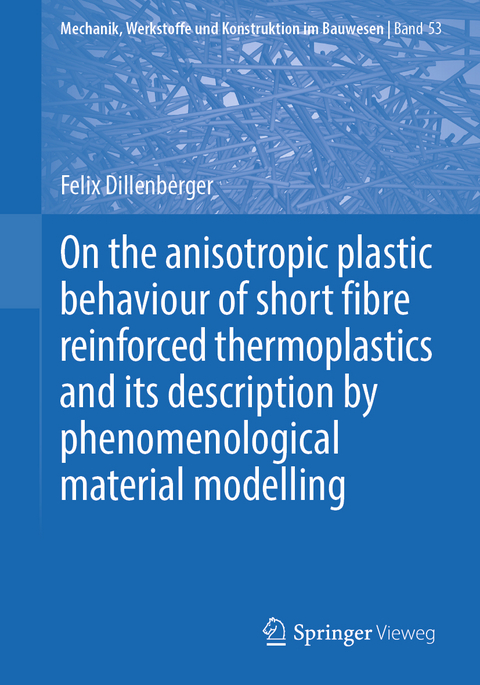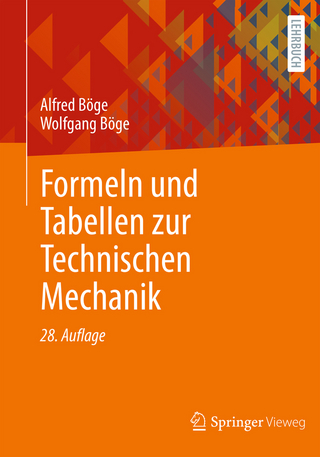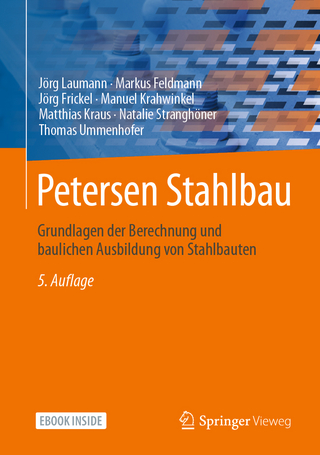
On the anisotropic plastic behaviour of short fibre reinforced thermoplastics and its description by phenomenological material modelling
Springer Fachmedien Wiesbaden GmbH (Verlag)
978-3-658-28198-4 (ISBN)
A requirement for the safe design of thermoplastic parts is the ability to precisely predict mechanical behaviour by finite element simulations. Typical examples include the engineering of relevant components in automotive applications. For this purpose adequate material models are essential. In this context, the present work introduces a material modelling approach for short fibre reinforced thermoplastics (SFRTPs). SFRTP parts are processed cost-effectively by injection moulding and show a varying degree of anisotropy due to the locally inhomogeneous fibre distributions that arise during the moulding process. The presented material model considers linear-elastic behaviour and non-linear orthotropic stress-state dependent viscoplastic deformation for arbitrary fibre distributions. The constitutive equations are verified with the experiments of a PPGF30 material regarding different stress-states and orientations.
Dr.-Ing. Felix Dillenberger is a mechanical engineer whose research focusses on the characterisation of the mechanical behaviour of thermoplastic plastics and their modelling in finite element simulations.
Glossaries.- Motivation and Outline.- Injection Moulded Short Fibre Reinforced Thermoplastics.- Polymeric Matrix Materials.- Reinforcement Fibres.- Composite Properties.- Injection Moulding.- Determination of Fibre Distributions.- State of the Art of SFRP Material Modelling.- Mechanical Basics.- Kinematics.- Stress.- Linear Elasticity.- Yield Condition and Plastic Potential.- Limit Criteria.- Damage.- Rate Dependency.- Material Characterisation.- Choice of Material.- Coordinate System Definition.- Experimental Set-up.- Experimental Results.- Discussion of Temperature Effects.- Material Modelling.- Overview.- Modelling of Linear Elasticity.- Modelling of Plastic Behaviour.- Modelling of Damage and Failure.- Numerical Implementation.- Verification.- Verification of Linear Elastic Response.- Verification of Plastic Response.- Numerical Verification of the Material Model.- Considerations for Engineering Practice 1857.- Determination of the Elastic Stiffness Matrix.- Determination ofthe Limit of Linear Deformation.- Determination of Plastic Deformation.- Consideration of Damage and Failure.- Summary and Outlook.
| Erscheinungsdatum | 01.11.2019 |
|---|---|
| Reihe/Serie | Mechanik, Werkstoffe und Konstruktion im Bauwesen |
| Zusatzinfo | XIX, 227 p. 76 illus., 56 illus. in color. |
| Verlagsort | Wiesbaden |
| Sprache | englisch |
| Maße | 168 x 240 mm |
| Gewicht | 426 g |
| Themenwelt | Technik ► Bauwesen |
| Weitere Fachgebiete ► Handwerk | |
| Schlagworte | Anisotropic plasitc • Material Modeling • Mechanical behaviour of plasitc • mircomechanice • orthotropic plasticity • Polymeric Matrix Materials • PPGF30 • SFRTP • Short fibre reinforced plastics • Tsai-Wu |
| ISBN-10 | 3-658-28198-7 / 3658281987 |
| ISBN-13 | 978-3-658-28198-4 / 9783658281984 |
| Zustand | Neuware |
| Informationen gemäß Produktsicherheitsverordnung (GPSR) | |
| Haben Sie eine Frage zum Produkt? |
aus dem Bereich


